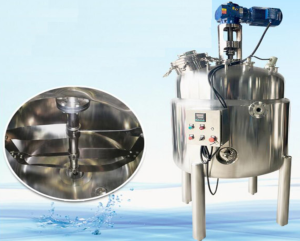
The decolorization tank adsorbs pigments or other impurities in the liquid material through activated carbon or other activated clay, so as to achieve the purposes of decolorizing, deodorizing, removing fishy smell, degreasing, removing impurities, purifying, refining, and perfecting refined sugar, monosodium glutamate, glucose, starch sugar, chemical auxiliaries, dye intermediates, pharmaceutical intermediates, food (additives), beverages, liquid medicine preparations, biochemical products, oils and fats, etc.
To achieve the best effect of the decolorization tank, the decolorization tank is generally a stirring reaction kettle with stirring. Heating medium is introduced into the jacket to heat the materials in the tank. Powdered activated carbon or clay, with the operation of the stirrer in the tank, fully mixes, stirs, and contacts with the materials at a suitable temperature condition to achieve adsorption and decolorization. Therefore, the main factors affecting the decolorization effect of the decolorization tank include the following aspects:
A relatively common material for decolorization tanks is stainless steel, that is, stainless steel decolorization tanks are quite common. The heating method can be selected as electric heating or steam heating. Since activated carbon is a relatively common decolorizing agent, most decolorization tanks are generally activated carbon decolorization tanks. A decolorization tank is a stirring – type reaction kettle, and usually, paddle – type stirring is commonly used. The specific stirring speed can be selected according to the materials. A decolorization tank is usually vertical and of a fully – enclosed structure, with a manhole to facilitate the addition of activated carbon. Common volumes: 50L, 100L, 200L, 300L, 500L, 600L, 1000L – 5000L, etc. Other specifications can be customized! Stirring is carried out at the top center, and the output shaft of the reducer and the stirring paddle shaft are connected by a loose sleeve, which is convenient for disassembly, assembly, and cleaning. The process parameters to be provided for the selection of an activated carbon decolorization tank include: material properties, working pressure, working temperature, operating conditions, etc.